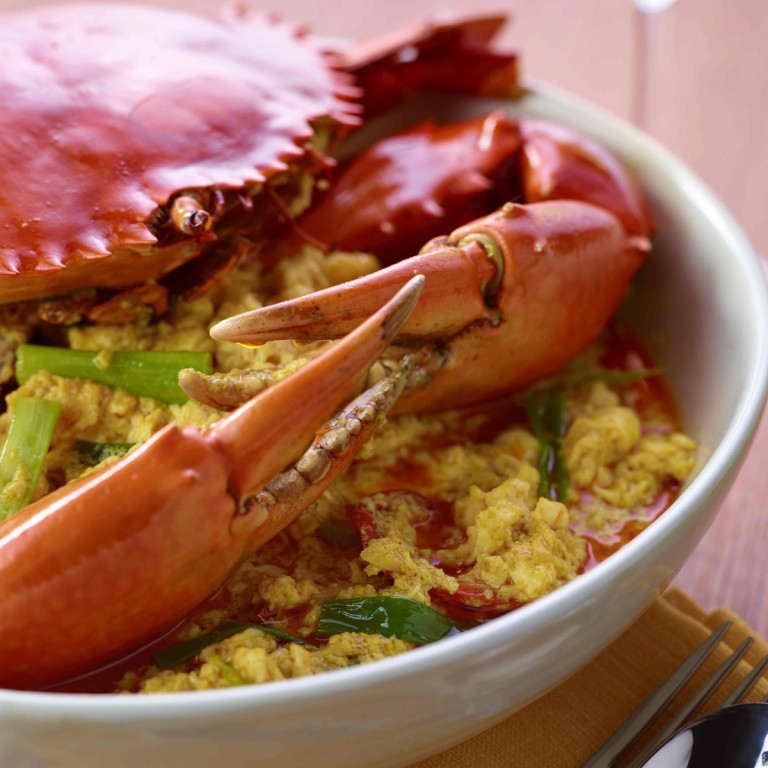
Thai and mighty: a taste of high-end cuisine from the Land of Smiles
High-end cuisine from the kingdom was once hard to find in the city, but a wave of new restaurants are raising the bar – and their prices, writes Bernice Chan
IT USED TO BE THE CASE that if you wanted really good Thai food in Hong Kong – rather than a watered down version – your best bet was to take a trip to Kowloon City. The small, no-frills restaurants there had been established in the days of Kai Tak Airport to cater to the demands of the Thai airline staff.
Another good option was the tiny, “behind the shop” eateries set up, well, behind the shops of Thai grocers in Wan Chai, places you wouldn’t know about unless you were told.
But now, restaurants are serving delicious Thai food in comfortable settings – albeit at a price.

Paul Kwok brought the Bangkokbased Mango Tree franchise to Hong Kong in 2011, setting up the first branch in Cubus in Causeway Bay. This was followed by a much larger version, which opened last year, in the Elements mall in Tsim Sha Tsui.
The former chef claims that most Thai restaurants in Hong Kong are not serious about offering the best Thai cuisine. “Thai food is popular here because you share the dishes and it’s spicy, but not too spicy,” Kwok says.
Kwok decided to bring high-end Thai food to Hong Kong with Mango Tree, because: “Hong Kong people have high standards when it comes to taste. If it’s good to eat, people will come.” He believes the menu offers dishes that are value for money, although that doesn’t necessarily mean they are cheap.
“We have a curry crab that’s popular for about HK$400, but it’s good value because it’s got lots of meat. We get all our sauces, herbs, garlic and chillies from Thailand, and our chefs are all Thai. If you have good service, a nice environment, and quality food, people think that’s value for money and they are happy to come,” he says.
Another restaurant offering upscale dishes is Chachawan, which presents food from Isan, the northeastern region of Thailand. Chef Adam Cliff explains the popular restaurant in Sheung Wan aims to replicate the area’s “intense punchy food, casual atmosphere and service with a smile”, with dishes that are specific to the region, including charcoal-grilled meats and sticky rice, which is imported from Thailand.

“Thai food is sometimes considered a ‘cheap’ cuisine, compared to French or Italian. Unfortunately, this idea often transfers to the mind of the head chef, who aims to keep costs low with the cheapest ingredients, and keeping staff to bare minimum.
At best, that produces mediocre food,” Cliff says.
“Chachawan uses high-quality, fresh produce sourced from around the world, with a brigade of chefs who are qualified to make dishes of a high standard, day in, day out,” he adds.
Most of the ingredients used at Chachawan are imported, including Iberico pork from Spain and wagyu beef from Australia. “The reasoning behind this is that different climates can alter the taste of your ingredients,” Cliff says, adding that he still tries to keep prices as low as possible.
The restaurant opened in July, and Cliff is pleased with the positive response. “Hongkongers have a greater appreciation for good food in general, and you can see this in the rapid growth of quality restaurants opening around town,” he observes.
One of the latest Thai restaurants in town is Namo in Tsim Sha Tsui East, which opened in December. The space, previously occupied by Ruth’s Chris Steak House, has plentiful natural light, and exotic olivecoloured fish-shaped tiles on the walls.

Thai chef Wijannarongk Kunchit runs the kitchen, and Spanish chef Alejandro Sanchez, formerly of Mesa 15 and Numero 15, gives his input on the dishes. “I really like Thai food. I think it’s interesting and complex,” Sanchez explains. “At Namo we want to create healthy, quality food – not fusion – to make better Thai food.”
He says that the dishes at Namo are cooked with herbs, lemon grass and kaffir limes from Thailand. They also use high-quality – but non-Thai – ingredients, such as Iberico pork, Mediterranean red prawns, Spanish bluefin tuna, Atlantic octopus and French free-range chicken.
“The prices of the dishes are reasonable for the ingredients we use, so it’s value for money,” Sanchez says, adding that making the dishes healthy is important.
Many Thai restaurants in Hong Kong serve tom yum goong with lots of coconut milk, which is fattening, even though it’s not always used in Thailand.
But Namo’s version just adds a little bit to make the soup smoother.
Where to find great Thai food
- 5/F Cubus, 1 Hoi Ping Road, Causeway Bay, tel: 2577 0828
- Shop 2032, 2/F Elements, 1 Austin Road West, TST, tel: 2668 4884. mangotree.com.hk
206 Hollywood Road, Sheung Wan, tel: 2549 0020. facebook.com/chachawan.hongkong
Shop G18 Empire Centre, 68 Mody Road, TST East, tel: 2739 1133. facebook.com/namohongkong
Wisdom Centre, 35 Hollywood Road, Central,tel: 3105 5055. aqua.com.hk
51 Peel Street, Central, tel: 2546 6162. facebook.com/TangerineThaiTapasWine
500 Jaffe Road, Causeway Bay, tel: 2778 9398

